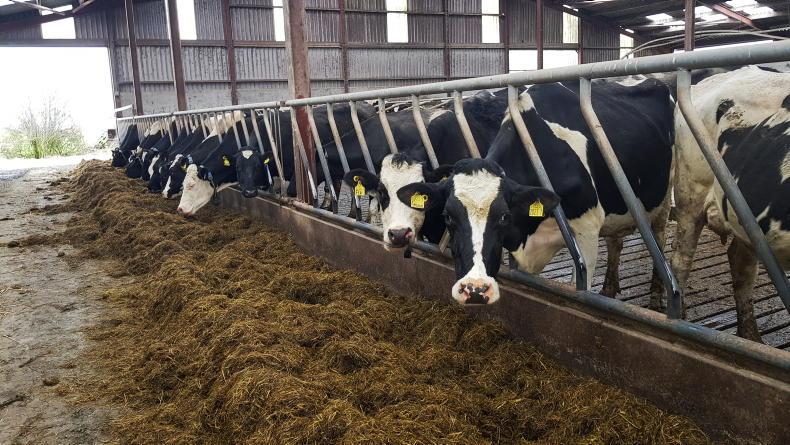A new study by researchers at the Agri Food and Biosciences Institute (AFBI) has examined different levels of crude protein in dairy diets over a full lactation.
The study, which involved 90 Holstein cows at the AFBI dairy unit in Hillsborough, Co Down, has recently been published in the scientific publication Journal of Dairy Science.
Having lower crude protein levels in dairy diets can have environmental benefits, as previous research has found it leads to less nitrogen being excreted by cows.
This reduces the risk of nitrogen being lost to the atmosphere as ammonia and nitrous oxide, as well as entering waterways in the form of nitrates.
The AFBI researchers point out that while lower crude protein levels can also reduce feed costs, it will only be adopted by farmers if there is “minimal or no loss in productivity”.
The first part of the new study examined three different diets over the first 180 days of lactation which had crude protein levels of either 150, 160, or 170g/kg.
It found that lowering crude protein levels from 170g/kg to 150g/kg reduced nitrogen excretion and improved “nitrogen use efficiency” in the dairy cows.
In terms of performance, the AFBI scientists state the drop in protein had “no detrimental effect” on dry matter intake, milk yield, milk composition, or milk constituents during early lactation.
However, after 180 days in milk, dry matter intakes and fat and protein yield was lower for cows offered diets containing 150g/kg of crude protein, compared to those on 160 or 170g/kg.
“This might suggest that the 150g/kg treatment, while perhaps just adequate in early lactation, was inadequate over a full lactation,” the research paper reads.
The AFBI scientists found the dietary crude protein level of 160g/kg “may be optimal to support performance over a whole lactation, improve nitrogen use efficiency, and reduce nitrogen excretion”.
Later lactation
Another part of the study aimed to further investigate previous research which suggested there could be scope to drop protein levels in later lactation with no loss in cow performance.
After 180 days, half of the cows in each treatment on the AFBI study were changed to a diet with crude protein of 140g/kg, while the other cows stayed on their original diets.
The results show no difference in performance between the cows offered the 150g/kg diet throughout lactation and any of the 140g/kg treatments.
“For cows offered a low-protein diet in early lactation, a further reduction in diet crude protein was possible with no negative effect on milk production.
“However, for cows offered higher crude protein diets in early lactation, milk production was reduced when these cows were offered lower-protein diets in mid-late lactation,” the study reads.
The AFBI scientists point out that this drop in performance occurred even though all diets were formulated to meet the expected protein requirements of cows.
This could reflect “limitations of current protein feeding systems” where the amount of protein available in diets could be overestimated in some instances.
“Although diets were formulated to supply 100% metabolisable protein requirements, it is possible that metabolisable protein supply was inadequate,” the AFBI scientists state.







 This is a subscriber-only article
This is a subscriber-only article










SHARING OPTIONS: